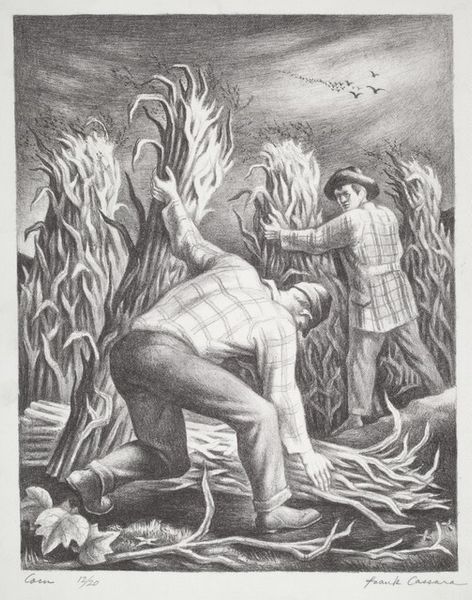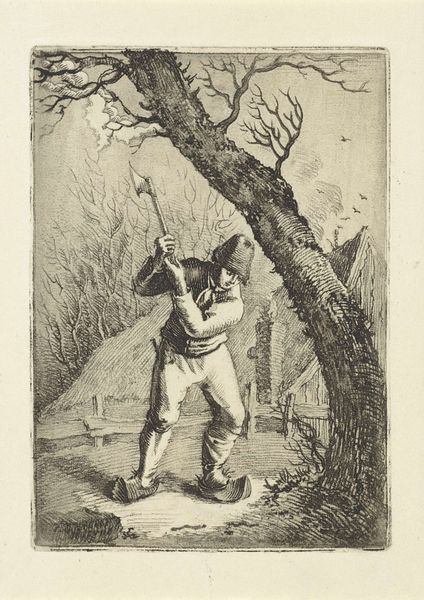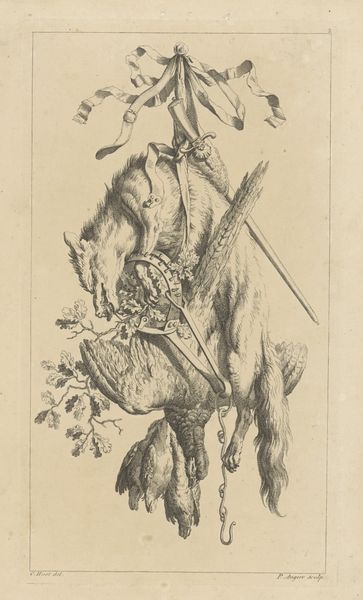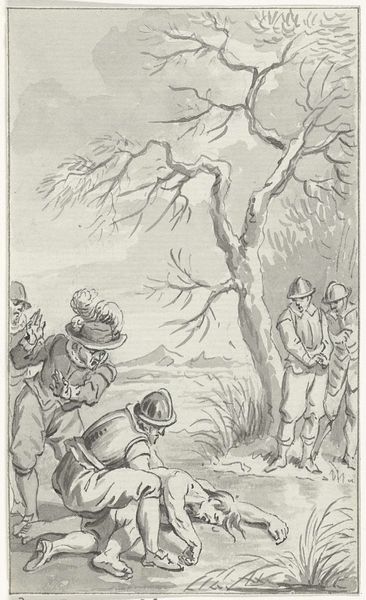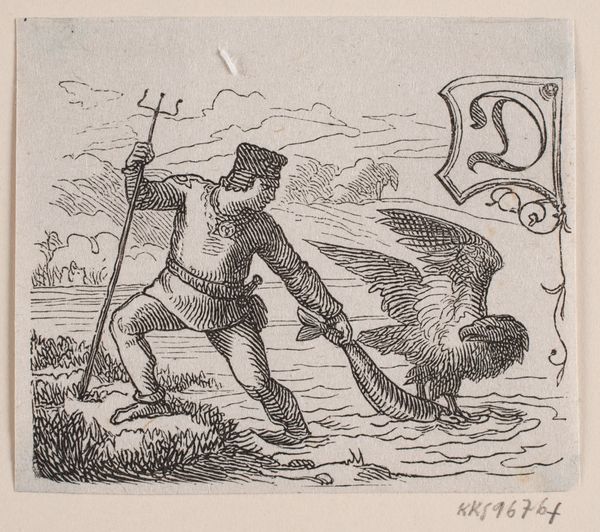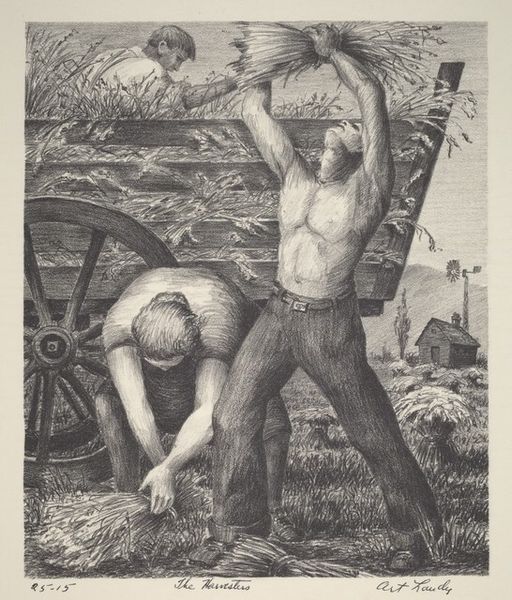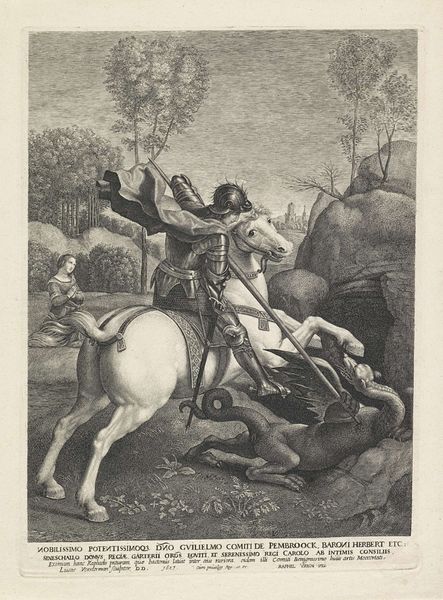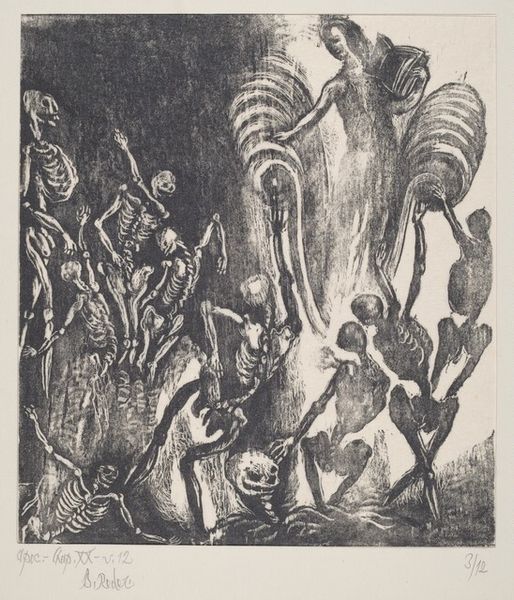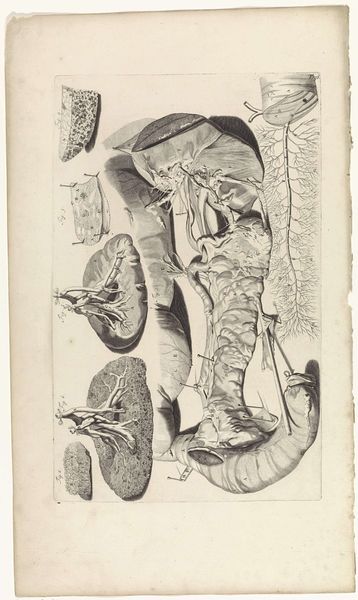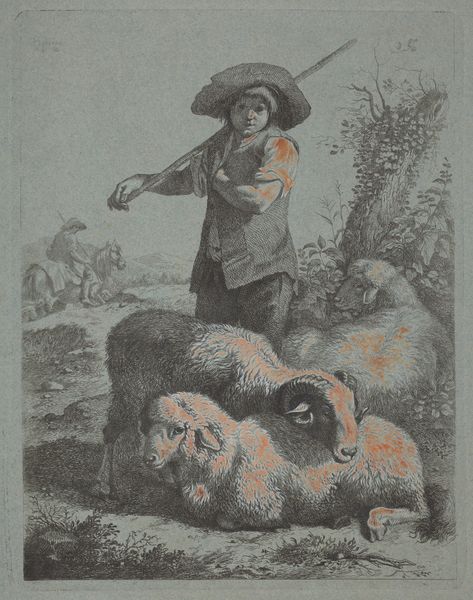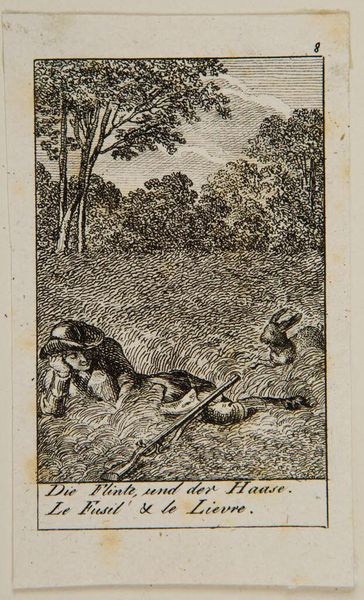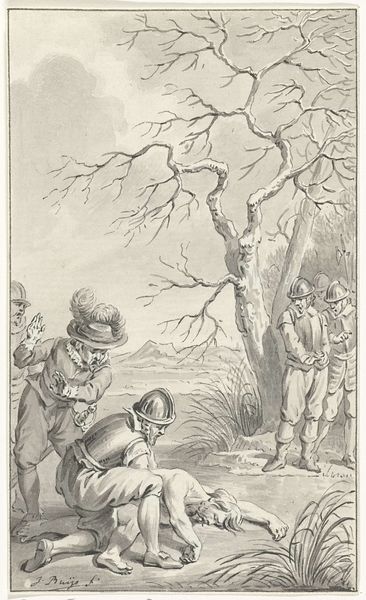
drawing, print, pencil
#
pencil drawn
#
drawing
#
narrative-art
# print
#
landscape
#
pencil drawing
#
pencil
#
regionalism
#
realism
Dimensions: image: 41.9 × 26.7 cm (16 1/2 × 10 1/2 in.) sheet: 47 × 33 cm (18 1/2 × 13 in.)
Copyright: National Gallery of Art: CC0 1.0
Curator: This is Merritt Mauzey's "Bob Smith, Grubber," likely from the 1940s, rendered in pencil on what appears to be a printed medium. The intricate mark-making is fascinating. Editor: My immediate impression is one of immense physical labor. The figure appears to be locked in a silent struggle with this massive tree. There's an almost biblical feel to it, something about man versus nature. Curator: The title itself positions it within a specific socio-economic framework. The term "grubber" suggests manual labor, a removal of something unwanted. We see evidence of that labor right there in the tools cast on the ground. It's a portrait not just of an individual, but of work. Editor: And yet, the tree dominates. Look at its skeletal branches reaching upwards, almost beseeching the sky. To me, the figure, though central, seems smaller than this natural entity he’s grappling with. It becomes an exploration of mortality, a reminder of forces beyond human control. Is it a comment on his position as subjugated by something powerful? Curator: Consider the setting, too. Mauzey's commitment to realism grounds the figure in a distinct region and activity, perhaps reflecting Regionalist themes popular at the time. It’s about capturing an authentic American experience. And the prints would have been accessible... democratizing the artistic representation of that experience. Editor: Yes, and this specific, authentic experience evokes a timeless and universal feeling about effort and the relationship between man and land. Note how his pose practically echoes the lines of the tree—a sort of dark, almost symbiotic embrace. It raises issues about the human role and its continuous dependence upon exploiting natural sources. Curator: Precisely. The artist invites a commentary on how these resources were used during those times, hinting at themes such as environmental consequences. It acts as a document of its time. Editor: The figure could represent something ancient. I keep coming back to that almost primordial struggle. In the stark lines, I see the weight of inherited labor, the imprint of past generations grappling with similar burdens. Curator: Absolutely. Mauzey captures a specific historical moment, and through material accessibility he invites discourse and participation to address his world’s environmental implications. Editor: Yes, what I find striking is how a work so seemingly specific can resonate with such enduring symbolic power. Curator: It leaves you considering the relationship between land, labor, and legacy.
Comments
No comments
Be the first to comment and join the conversation on the ultimate creative platform.
